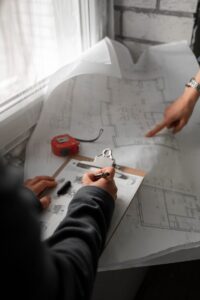
Architecture is more than just designing buildings; it is the art and science of shaping spaces that define our experiences, culture, and way of life. From ancient monuments to modern skyscrapers, architecture reflects human creativity, innovation, and functionality. In this article, we explore the comprehensive definition of architecture and its journey from conceptual ideas to tangible constructions.
What is Architecture?
The Core Definition of Architecture
Architecture can be defined as the thoughtful planning, designing, and construction of buildings and spaces that are both functional and aesthetically pleasing. It is the intersection of art, science, and engineering, ensuring that structures are safe, sustainable, and visually impactful. Beyond buildings, architecture encompasses urban design, interior spaces, landscape planning, and cultural expressions.

The Key Elements of Architecture
Architecture is built upon several fundamental elements:
- Functionality: A well-designed structure serves its intended purpose efficiently.
- Aesthetics: The visual appeal and style of a building or space influence human emotions and perceptions.
- Sustainability: Modern architecture emphasizes eco-friendly practices and materials.
- Safety and Structural Integrity: Buildings must withstand natural and human-made forces.
- Cultural Relevance: Architecture often reflects the traditions, values, and history of a society.
Architecture Through History
Architecture has evolved over centuries, architecture definition adapting to changing technologies, materials, and societal needs:
- Ancient Architecture: Focused on monumental structures and religious buildings, e.g., pyramids and temples.
- Medieval Architecture: Characterized by castles, cathedrals, and fortifications.
- Modern Architecture: Emphasizes minimalism, functionality, and innovative materials.
- Contemporary Architecture: Integrates technology, sustainability, and artistic expression in design.
From Concept to Construction
The Architectural Process
The journey of architecture from concept to construction involves multiple stages:
- Conceptualization: Architects gather requirements, study the site, and brainstorm initial design ideas.
- Design Development: Detailed sketches, 3D models, and simulations refine the design.
- Planning and Approval: Regulatory permissions and feasibility studies are conducted.
- Construction: Engineers and builders bring the architectural vision to life, ensuring safety and quality.
- Post-Construction Evaluation: Final inspections, feedback, and adaptations ensure the building serves its intended purpose.
Role of Technology in Modern Architecture
Technological advancements have revolutionized architecture:
- 3D Modeling and BIM (Building Information Modeling) streamline design and collaboration.
- Sustainable Materials and Smart Systems reduce environmental impact.
- Virtual Reality (VR) and Augmented Reality (AR) allow clients to experience designs before construction.

Conclusion
Architecture is a dynamic and multifaceted discipline that bridges creativity, science, and functionality. From the spark of an idea to the construction of a physical structure, architecture shapes our environment and enriches our lives. Understanding its definition, key elements, and processes allows us to appreciate the profound impact it has on culture, society, and daily living.


